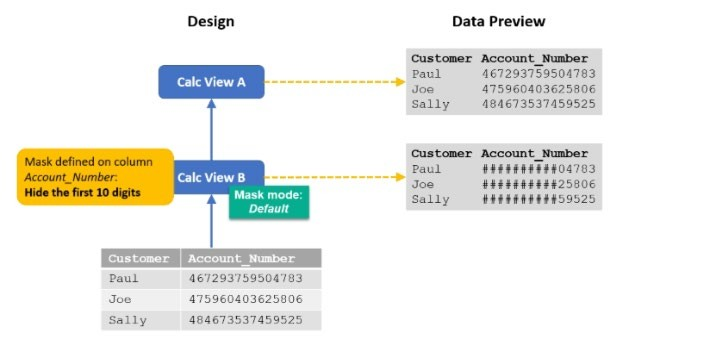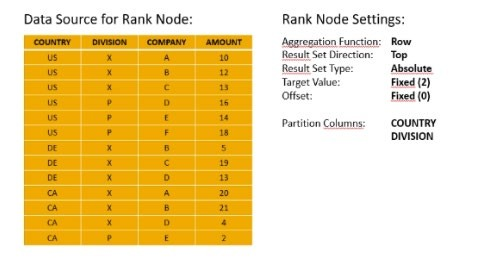SAP HANA Cloud Modeling Demo Questions
When you're studying for SAP HANA Cloud Modeling exam, it's important to know what kind of questions to expect. This way, you can focus your studies on the areas that will be covered on the C_HCMOD_05 exam.
To help you out, we've compiled a list of SAP HANA Cloud Modeling Certification sample questions and answers which will help you a lot in the exam.
SAP HANA Cloud Modeling questions will give you a good idea of the format and difficulty level of the exam, as well as the types of topics that will be covered. If you want to clear your SAP HANA Cloud Modeling Exam in single attempt then we highly recommend you go to through the full C_HCMOD_05 dumps.
SAP HANA Cloud Modeling Certification questions can help you clear the exam by providing you with an opportunity to practice what you have learned. Additionally, C_HCMOD_05 certification questions can help to identify any areas where you may need additional study. By taking the time to review certification questions, you can improve your chances of passing the exam. If you're preparing for SAP HANA Cloud Modeling certification exam, one of the best ways to study is by answering practice questions. This will give you a good idea of what to expect on the actual SAP HANA Cloud Modeling exam. Furthermore, by familiarizing yourself with the format and types of questions, you can optimize your study time and improve your chances of passing the exam.
C_HCMOD_05 Certification questions can help you clear the exam by testing your knowledge of the material. By answering questions, you can see where you need to brush up on your understanding of the concepts. In addition, answering questions can help you identify any areas where you may need more study.
SAP HANA Cloud Modeling Sample Questions:
1. You have imported a new calculation view in a folder that contains an .hdinamespace file. This calculation view consumes one data source, which is a table. When trying to deploy the calculation view, the deployment fails with a namespace-related issue.What could be the reason? (2 correct)
A. The namespace used within the calculation view to reference the table is different from the actual namespace in the identifier of this table.
B. The imported calculation view and its data source have different namespaces.
C. An .hdinamespace file is defined in the SRC folder that specifies a different namespace property than the one in the identifier of the calculation view.
D. The .hdinamespace specifies "sub-folder":"append", so calculation views can only be created in subfolders.
2. Why do you use the Hidden Columns checkbox in the semantics node of your calculation view? (2 correct)
A. To prevent passing columns in stacked calculation views
B. To ensure specific columns are NOT exposed to the reporting tool
C. To remove a column that is also used as a Label column
D. To avoid exposing sensitive columns when defining calculated columns
3. Which calendar types can be selected when creating time-based DIMENSIONS? (2 correct)
A. Fiscal
B. Julian
C. Gregorian
D. Factory
4. You are deploying a new calculation view, A, that uses calculation view B, as shown in the diagram. When you preview calculation view A, the account number is not masked.What could be the reason?

A. You previewed the data with the technical user in SAP Business Application Studio.
B. You did not define masking in calculation view A.
C. The UNMASKED privilege has NOT been granted at the schema level.
D. The type of the Account_Number column is VARCHAR.
5. You define a hierarchy in a calculation view. You want to expose the hierarchy to SQL. Which of the following conditions must be met? (2 correct)
A. The hierarchy must be exposed by a calculation view of type CUBE with star join.
B. The hierarchy must be a shared hierarchy.
C. The hierarchy must be a local hierarchy.
D. The hierarchy must be a parent-child hierarchy.
6. You create a user-provided service to access tables in external schemas. In which file type do you assign the user-provided service to your database module?
A. .hdiconfig
B. .mtar
C. .yaml
D. .namespace
7. Why would you partition a table in an SAP HANA Cloud database?
A. To improve response time when multiple users access the same table
B. To improve query performance when accessing large column tables
C. To improve data replication performance on large row tables
D. To overcome the 2 billion record limit
8. A calculation view includes a rank node that uses the source data and settings shown in the graphic. Your query requests all columns of the rank node. How many rows are in the output of your query?

A. 9
B. 2
C. 5
D. 6
9. What do you use in the definition of a dynamic SQL analytic privilege?
A. A table function that returns a list of allowed values.
B. A scalar function that returns a list of the allowed values for each attribute.
C. A procedure that returns the data access condition as an SQL expression.
D. An organization hierarchy that provides role-based access to data.
10.You created a procedure to be consumed in an analytic privilege of the type DYNAMIC, but it isn?t working as expected. What could be the reason? (2 correct)
A. No input parameter is specified
B. You defined more than one output parameter
C. The output parameter is defined as NVARCHAR
D. The procedure is write-enabled
Check Out The Answer Key
Tags:
C_HCMOD_05 FAQ | C_HCMOD_05 detail | C_HCMOD_05 study material | C_HCMOD_05 practice tests | C_HCMOD_05 sample questions | C_HCMOD_05 Pdf dumps